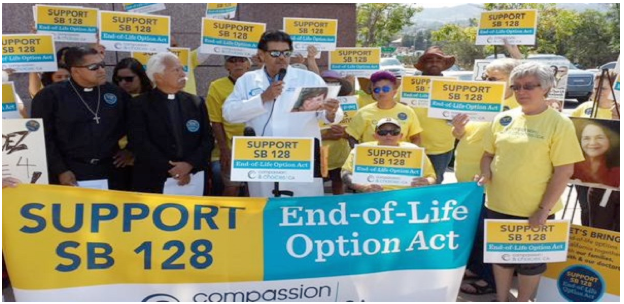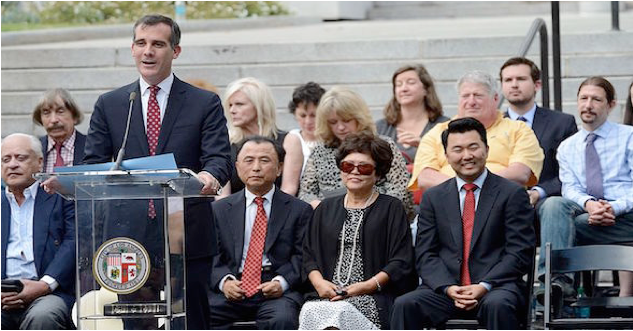Stage Watch: The Fringe Fest Produces Some Winners … ‘Office Beat, a Tap Dance Comedy’ Among Them
GELFAND’S WORLD--The Hollywood Fringe Festival ran through June 26, allowing increasingly lively crowds to catch up to shows that have been receiving positive coverage. I managed to catch Tilt, Time Stands Still, and Office Beat, a Tap Dance Comedy. I have to admit that the idea of a tap dance comedy struck me as unusual, but it turned out to be one of the better shows.
Office Beat is the creation of Tap Overload, itself the creation of Gabe and Mindy Copeland, a husband-and-wife team with long backgrounds in tap. The show opens on a more or less normal office setting with a row of desks and chairs. But this office is a bit peculiar, because the workers don't talk and don't seem to be doing much office work. What they do is tap dance. They like to tap dance. They do it as individuals, in pairs, and as an entire ensemble.
One day, they get a new boss. He's a mean guy. He posts signs making it against the rules to do any more tap dancing. (This is called dramatic tension, and it's all that this show has or needs.) The staff resist the new boss by dancing when he's not around, and becoming increasingly rebellious to him when he is around. I'll leave it to your imagination to decide whether the boss ultimately has his way, making this show a tap dance tragedy, or maybe he eventually changes his mind even as he discovers that he himself can tap! (The exclamation point would be appropriate if things were to turn out that way, don't you think?)
About half way through Office Beat, I realized that this show has managed to capture the look and feel of the good old days of silent film. There is no spoken dialogue, and the cast is left to communicate using their own athletic ability, facial expression, and a bit of mime. There are a few written signs (No Tap Dancing Allowed) which fit the bill precisely as replacements for what the old-time movies used to call intertitles. And just like the silent movies -- which were never silent, but had musical accompaniment, often with a lot of rhythm -- the show was ultimately a bit of Buster Keaton or Clara Bow.
Gabe Copeland as the new hire and Valerie Rockey as an office worker were outstanding. Rockey turns out to have been the runner-up on the tv show So You Think You Can Dance. Actually, they all were quite good. The audience filed out in good humor.
Time Stands Still is the story of Sarah, a photographer of wars and famines, who has arrived back home to New York City from the middle East. She is recovering from a near-fatal exposure to an improvised explosive device. She squabbles with her long-time boyfriend James, a writer of wars and famines. The two of them squabble with their old friend Richard, an editor at the magazine they seem to work for, and they get to know Richard's brand new love interest Mandy. This is a lot of introduction to shoehorn into 60 minutes of playing time. Mandy, though much younger than the others, is the source of commonsensical interventions when they are most needed. It's that oldest cliche from the movies as explained by Roger Ebert -- in a story about teachers and students (or in this case, the young and the middle aged), the teachers eventually learn from the students, the older from the younger.
Lauren Shein as Sarah holds her own with a convincing and naturalistic acting style. Tashia Gates as Mandy gets to portray positive emotion battling the gloom and anger presented by the others.
I mention the next play because it has been getting a lot of positive comments in the Fringe's own review site, while paradoxically reflecting on my own negative comments about the Fringe management in a previous column. Tilt is either a decent first effort by a talented actor/playwright or the ultimate salute to sadism, irresponsibility, and amorality.
In a mountain cabin, a slightly hairy, crazed fellow shambles around holding a crowbar in hand and spouting pseudo-profundities. The door opens and in comes a less-crazed fellow in a black leather jacket. It turns out that they did an armed robbery a week earlier and have been hiding out. Black leather jacket went away for a few days, leaving the hairy fellow to watch over the cabin.
It is at this point that we learn something shocking. Sometime during that interval when leather jacket was away, the hairy fellow was surprised by a couple who were trying to gain entry. The couple, who we never see, were interested in what used to be called a romantic tryst. We now learn that the hairy fellow, reacting to being discovered, used his crowbar to break the legs of the couple. Then he duct taped them to a couch. This is all rattled off in what otherwise passes as a comedy. The fact that this conduct amounts to torture doesn't come up in the ensuing dialogue. The hairy fellow is resigned to killing the captives, and leather jacket desperately tries to find a way out. Neither of the main characters displays empathy towards the captives.
The staging gimmick is that the main characters are looking towards the audience as they discuss the injured couple. We are the victims and they are us. It's not quite breaking the fourth wall, but it's close enough.
There is a lot of further explication of how this all came to be. The fellow in the black leather jacket turns out to be the more civilized -- or at least less crazy -- of the two crooks. He's been a Beverly Hills jewelry salesman, and now he is caught up in something he didn't intend. It's the ultimate nightmare -- a wide awake bad dream in the making -- being forced to choose between joining in murdering the injured couple or somehow figuring a way out of the quandary.
You might say that leather jacket is more capable of planning for the long run, and the hairy fellow is less capable of impulse control. Perhaps the moral of this story is that you shouldn't take off and do armed robberies with homicidal maniacs, because bad things could come out of it. Or you might consider the moral question faced by the salesman -- should he take some action that will eventually result in him being punished by the justice system (like arrange for the two victims to be saved), or should he abandon the injured couple to their own bad luck and just take off. Like I said, the leather jacket character doesn't seem to apply empathy to his attempts at planning. The victims are there as a plot gimmick, put there to create an impossible situation for the less crazy of the two crooks.
This not being a romance, the salesman eventually takes his half of the swag and leaves the injured couple to the announced homicidal intention of the crazed fellow. It's about as amoral an ending as you might imagine.
There is something worth thinking about here. If you were to analyze this play according to a deep critic such as the late John Gardner, whose book On Moral Fiction explained what real literature is about, you would realize that the play comes from a very bleak and depressing place. The salesman raises the moral issue early on, but this theme just sort of evaporates away, as the dialogue takes the two characters into an exploration of their own relationship and how they came to be stuck in their difficult situation. Our salesman character doesn't so much deal with his moral question as he manages to divert himself from it by thinking about other things.
I guess we have a new art form here, the theater of responsibility avoidance. Students of Antonin Artaud and the theater of cruelty might take note.
I've concentrated on the meaning of the play, sort of like you might consider the moral meaning of Oedipus Rex or Rhinoceros, but only to illuminate the fundamental lack of moral thought at its core.
This is not to criticize the acting or the technical proficiency that went into the writing and directing. Ben Moroski is the author and plays the guy in the leather jacket. Michael Shaw Fisher plays the hairy guy. Unlike some other Fringe plays I have seen over the past couple of years, the actors do their lines like they really mean them, find the comedic pauses effectively, and basically sell the characters to the audience. Tilt is worthy of being considered on a higher level than, for example, Time Stands Still, because the presentation is excellent. The fact that one play argues serious moral concerns and the other makes them frivolous is a different question. I wonder if Tilt, as performed this week, might (with a little judicious rewriting) be the opening act in a much deeper three act play.
On the same weekend, Long Beach Opera performed The News. It's a rhythmic, tuneful one-act opera with two female singers, a supporting band, and full-wall projections of what is going out from a television news show. It's the news on television, performed in front of us as modern opera.
Mark Swed's review in the L.A. Times nailed it: The singers are great, the band is great, and the level of in-depth commentary on how television delivers the news is a bit weak. Singer Loire Cotler is something called a rhythm vocalist. She uses her voice as a percussion instrument to amazing effect. Maeve Hoglund is the more traditional soprano voice, and performs well.
(Bob Gelfand writes on science, culture, and politics for CityWatch. He can be reached at [email protected])
-cw

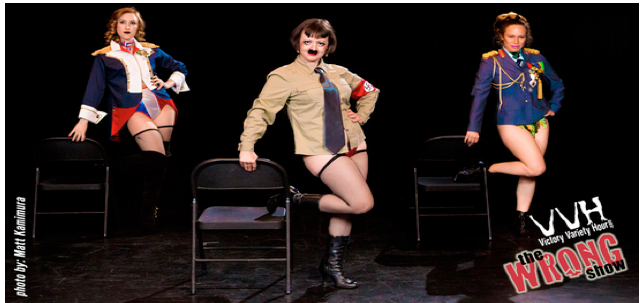
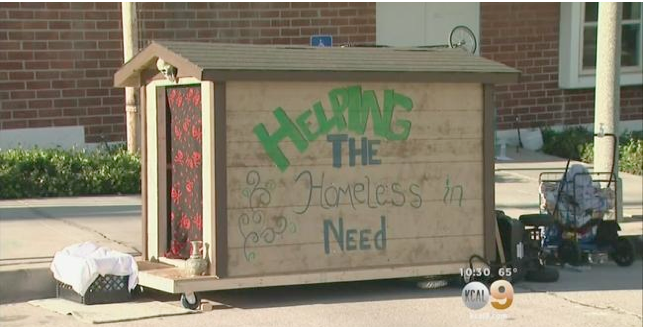
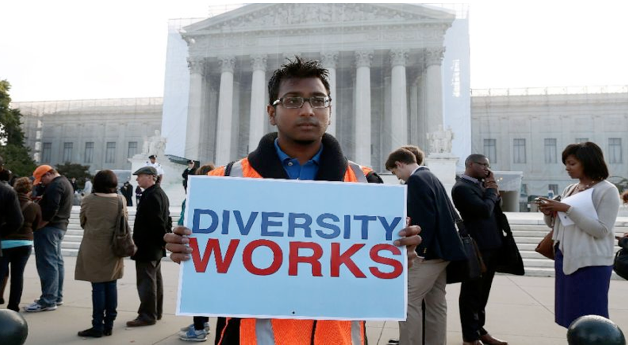
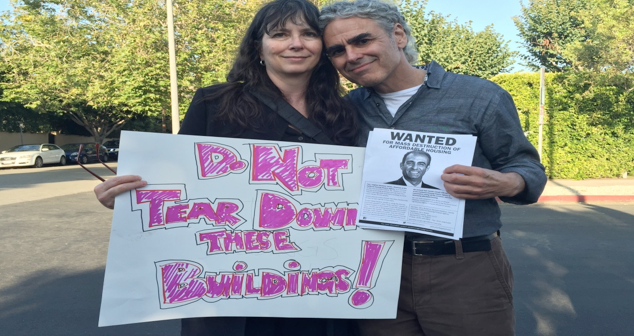
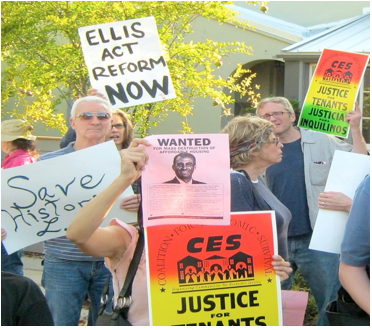 In the transcript of the PLUM meeting, the City Planning Director and two of the 15 City Councilmembers -- Huizar and Cedillo -- admit they do not know what the cumulative impact their constant approval of Ellis Act evictions has had in creating homelessness. Most likely, the other 13 Councilmembers are equally unaware that when they say “yes” to developers wanting to build in their districts, often with favors attached, they are also saying “no” to tenants who are also constituents.
In the transcript of the PLUM meeting, the City Planning Director and two of the 15 City Councilmembers -- Huizar and Cedillo -- admit they do not know what the cumulative impact their constant approval of Ellis Act evictions has had in creating homelessness. Most likely, the other 13 Councilmembers are equally unaware that when they say “yes” to developers wanting to build in their districts, often with favors attached, they are also saying “no” to tenants who are also constituents. 